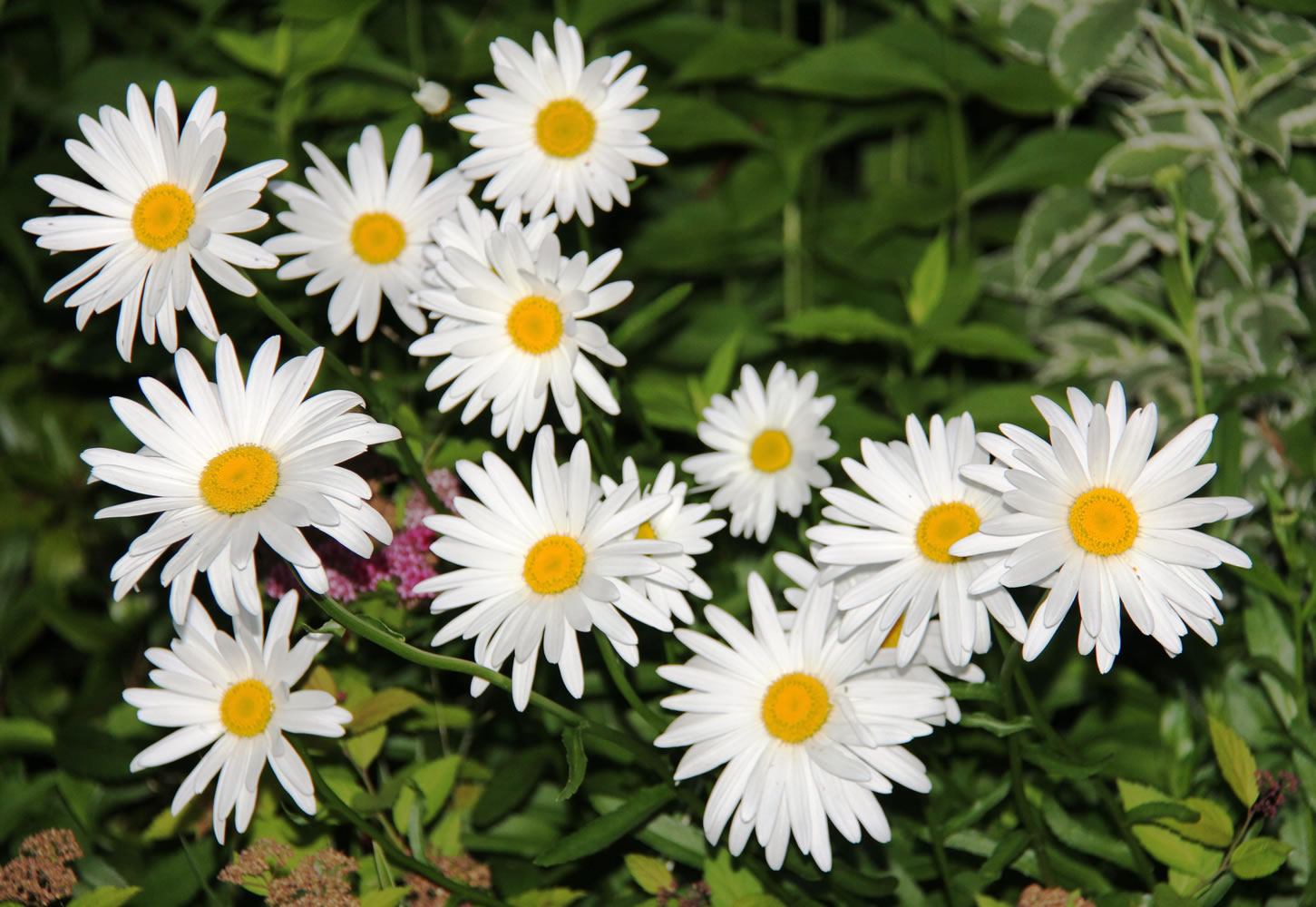For many gardeners, these days of summer sunshine draw us out in the garden more than any other time of year. The workload remains steady and deadheading is one element of a productive yet tidy garden. I have to admit that my efforts to control abundant plant growth and keep everything within bounds can be downright exasperating. Fortunately, summer days are long and warm, and by late afternoon there’s no place I’d rather spend my time.
All container plants need special attention in hot, dry weather. It’s important to water enough to keep the soil moist to within an inch of ground level. This may mean daily watering if temperatures stay high and the planters are exposed to the elements. Hanging baskets are especially susceptible to drying out since they are exposed on all sides and on the bottom.
Every couple of weeks, mix a liquid fertilizer in with the plant’s water. Since water flows through the container quickly, it leaches nutrients from the soil. Plant food needs to be replaced throughout the season for continued growth and flower production. If
your plant’s soil should completely dry out, always water well before adding fertilizer.
Although I have explained techniques of pruning in previous columns, it is still one of the most frequent topics readers ask about. Until I began to garden on my own, I didn’t really know the difference between deadheading, pinching out, pruning and cutting back. They seem like such simple terms until you come face to face with a plant.
Simply put, deadheading is the act of removing spent flowers. By deadheading, you prevent the plant from going to seed and encourage the plant to send out new flowers. It also improves the appearance of most plants, particularly roses and herbaceous perennials. The classic method of deadheading chrysanthemums is to literally “pinch back” or “pinch out” the topmost growth.
If you pinch the tips until mid- to late August, the plant will be fuller and more compact when it is allowed to produce flowers. This prevents each stem from getting tall and leggy, which often results in weak stems and flowers being splayed out on the ground when autumn rains arrive. It also delays the bloom period, extending flower production well into the fall season.
So, pinching is a method of deadheading. It literally involves a pinch with the thumb and forefinger. Take hold of the stem right below the flower bud and pinch with your thumb nail pressed against the fleshy end of the finger. It breaks right off. Removing the terminal end of a stem forces the plant to send out two shoots where there was one. Later, pinch those out and they each send out two shoots. This method works for coleus, asters and other soft-stemmed plants.
Roses need to be pruned with a pair of sharp pruners. The fussiest roses prefer you call the pruners “secateurs” but that’s another story. Pruning is the process of cutting back woody plants such as roses, shrubs and small trees. Pruning can also be considered a method of deadheading. By definition, it’s not considered pruning when you cut down an herbaceous perennial. That’s called cutting back and is usually done in late fall or early spring.
Pruning is best tackled one type of plant at a time, one job at a time. I have always relied on a good gardening book because I am comfortable with that format. I also have a tendency to form a loyalty to any old book I have relied on in the past for solid information and that I can carry it outside with me as a reference. However, nowadays you can carry an iPad or cellphone with you and go online to refresh your memory before you begin pruning.
Videojug’s DIY & Home page, http://www.videojug.com/tag/pruning, will take you directly to a set of videos that explain all you need to know about each plant you want to prune. There is also a written description of the process directly under the video window. You can print this information and take it outside with you to refresh your memory. I still believe in the phrase, “A picture is worth a thousand words.” I’m beginning to believe that an online video presentation of the latest gardening techniques is an invaluable learning tool.
Robb Rosser is a WSU-certified master gardener. Reach him at Write2Robb@aol.com.



